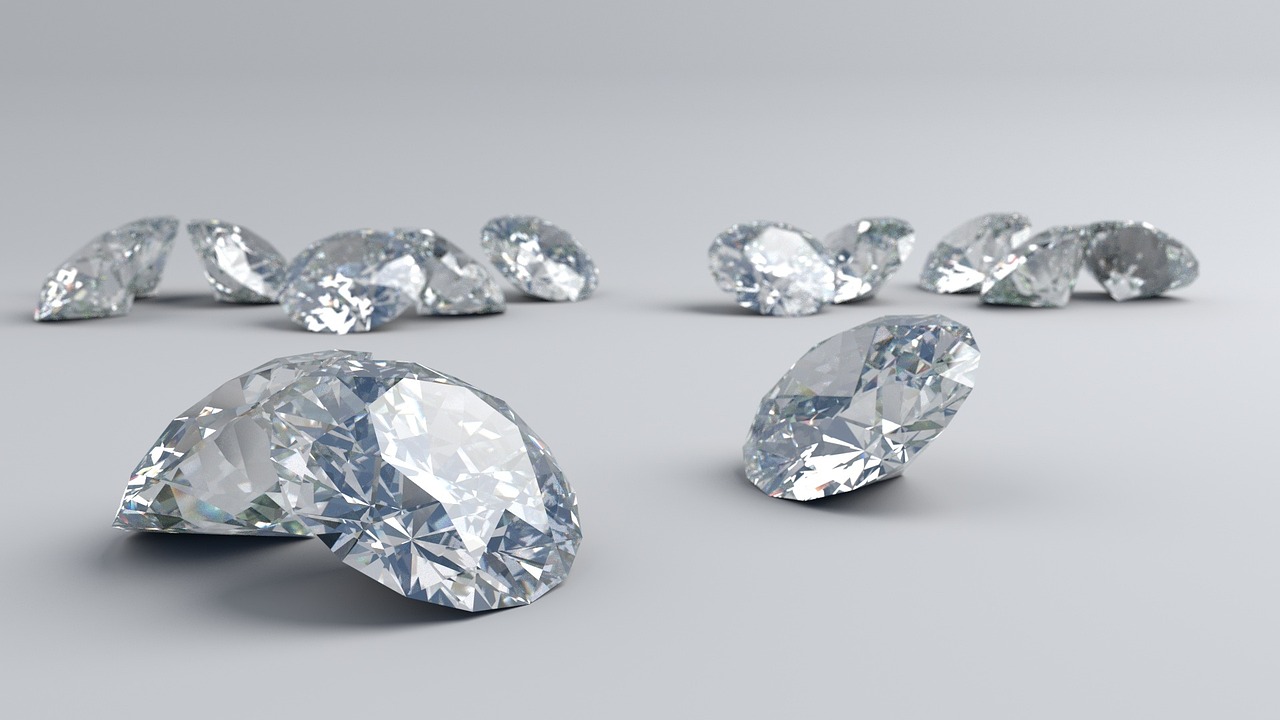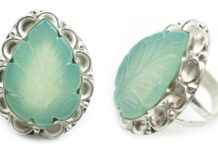This article delves into the importance of various gemstones used in rings, emphasizing their meanings, cultural significance, and the emotions they evoke. Understanding these aspects can assist you in selecting the most suitable stone for any occasion.
Understanding Gemstones: A Brief Overview
Gemstones have captivated humanity for centuries, not only for their aesthetic appeal but also for their deep-rooted symbolism. Different cultures have attributed unique meanings to these stones, making them significant in various traditions and rituals.
The Symbolism of Diamonds
Diamonds are often viewed as the epitome of love and commitment. Their brilliance and durability symbolize the strength of relationships, making them a favored choice for engagement rings.
Historical Significance of Diamonds
Diamonds boast a rich history, dating back thousands of years. Initially discovered in India, they were prized by royalty and became symbols of wealth and power across different civilizations.
Diamonds in Different Cultures
Across various cultures, diamonds hold unique meanings. For example, in some traditions, they are believed to bring protection and good fortune, while in others, they symbolize eternal love.
Modern Interpretations of Diamonds
In contemporary society, diamonds are often associated with everlasting love. The modern engagement ring has become a powerful symbol of commitment, shaped by changing relationship dynamics.
Emeralds: The Stone of Renewal
Emeralds are celebrated for their associations with rebirth and growth. Historically, they have been used in jewelry to symbolize renewal and vitality.
The Healing Properties of Emeralds
Many believe that emeralds possess healing qualities, promoting emotional balance and harmony. Their vibrant green hue is often linked to nature and rejuvenation.
Rubies: The Gemstone of Passion
Rubies are renowned for their deep red color, symbolizing passion and energy. They are often chosen for romantic gifts, reflecting intense emotions.
Sapphires: Wisdom and Nobility
Sapphires are traditionally associated with wisdom and royalty. Their deep blue color has made them a popular choice in royal jewelry, symbolizing power and prestige.
Choosing the Right Gemstone for Your Ring
Selecting the perfect gemstone involves understanding personal preferences and the meanings associated with each stone. Here are some tips:
- Consider Personal Style: Align your choice with your aesthetic preferences.
- Emotional Connections: Reflect on the emotions you wish to evoke with your selection.
Conclusion
In conclusion, the significance of gemstones in rings extends beyond their physical beauty. By understanding their meanings and cultural associations, you can choose a gemstone that resonates with your personal story and emotional journey.
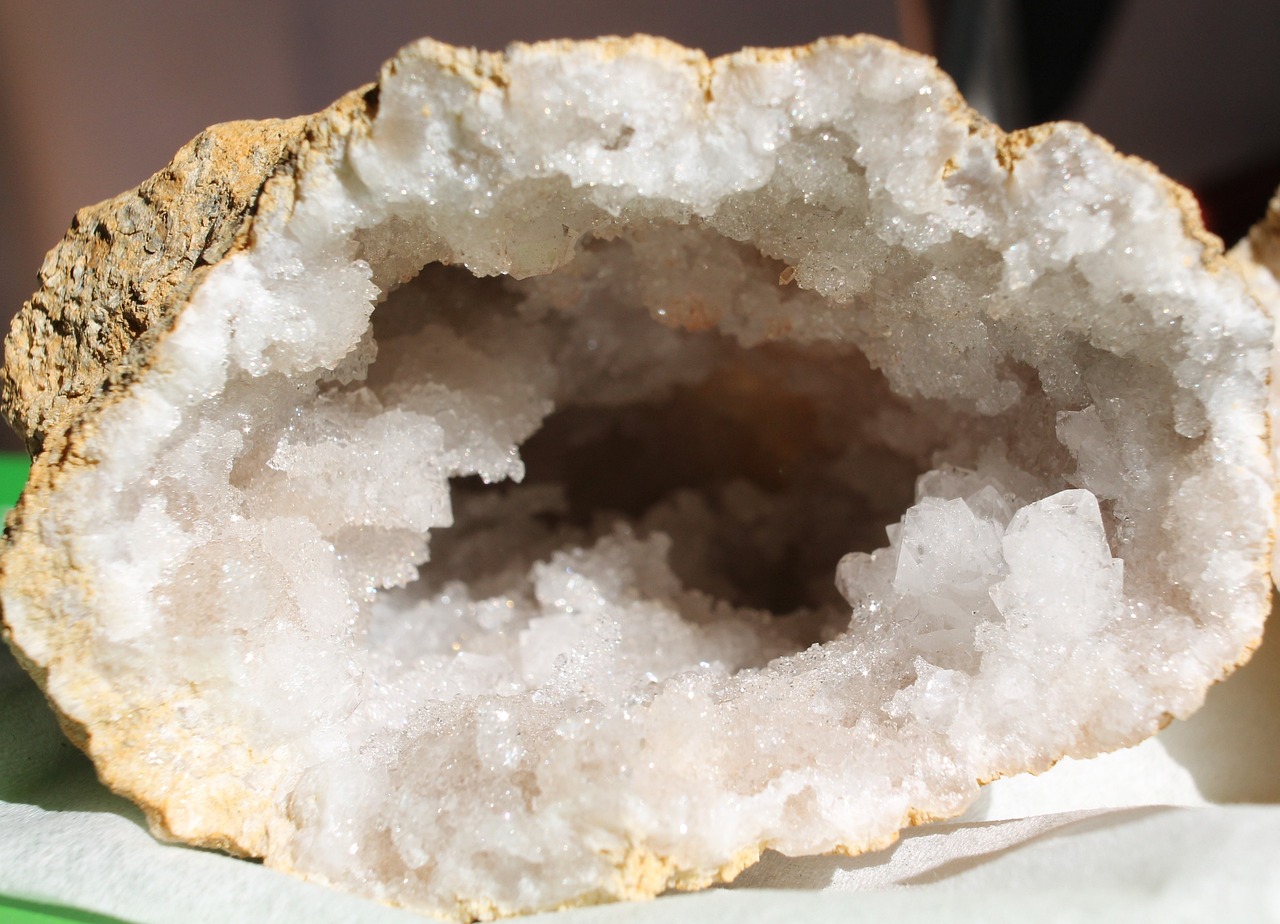
Understanding Gemstones: A Brief Overview
Throughout the ages, gemstones have captivated humanity with their stunning beauty and rich symbolism. These natural treasures are not merely decorative; they carry profound meanings and cultural significance that vary across different societies. This section aims to provide a foundational understanding of what gemstones are, their classifications, and their importance in various cultural contexts.
What Are Gemstones?
Gemstones are minerals that have been cut and polished to be used in jewelry and ornaments. They are typically valued for their rarity, beauty, and durability. Gemstones can be categorized into precious stones, like diamonds, rubies, sapphires, and emeralds, and semi-precious stones, which include a wide variety of other minerals.
The Cultural Significance of Gemstones
- Historical Importance: Many gemstones have been revered throughout history. For instance, the ancient Egyptians associated lapis lazuli with the heavens, while the Romans believed that emeralds brought good fortune.
- Symbolic Meanings: Different cultures attribute unique meanings to gemstones. For example, diamonds symbolize eternal love, while rubies are often seen as symbols of passion and energy.
- Healing Properties: In various traditions, gemstones are believed to possess healing properties. Amethyst, for instance, is thought to promote calmness and clarity of mind.
Conclusion
Understanding gemstones goes beyond their aesthetic appeal; it encompasses their historical, cultural, and emotional significance. Whether chosen for personal adornment or as thoughtful gifts, gemstones carry stories and meanings that resonate deeply with individuals and cultures alike. By appreciating these facets, one can make informed choices when selecting gemstones for various occasions.
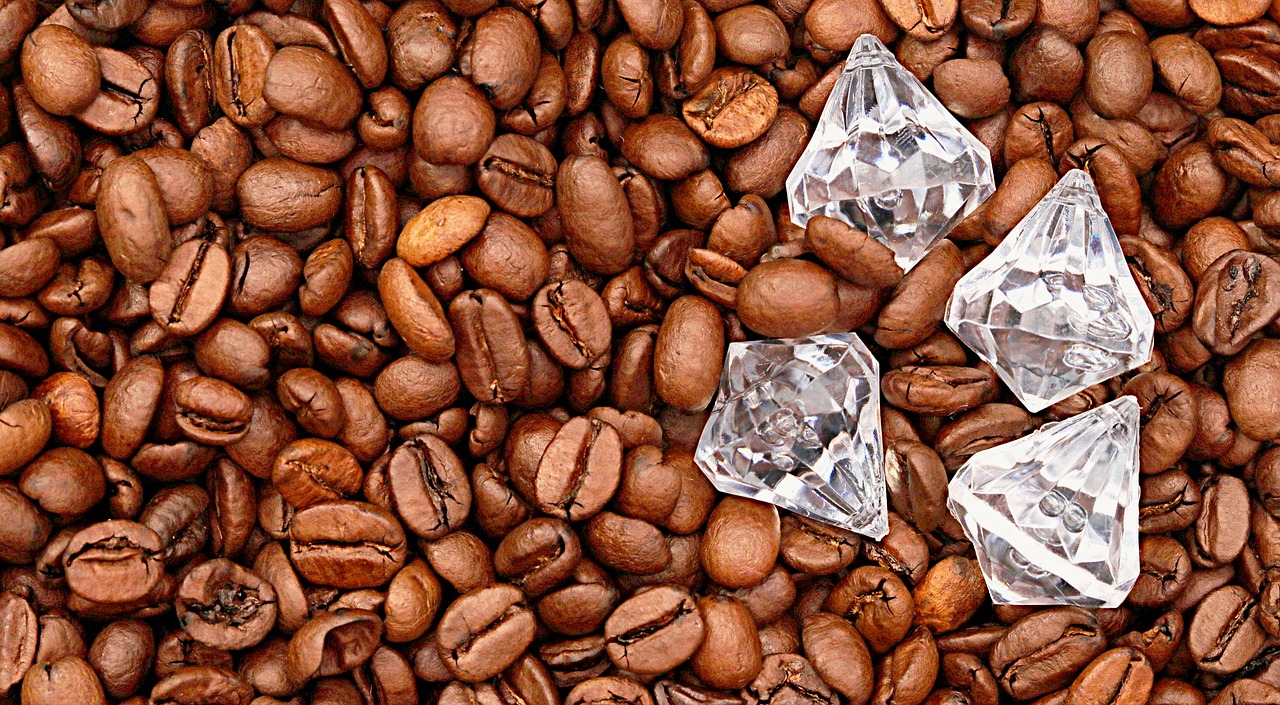
The Symbolism of Diamonds
Diamonds have long been regarded as the ultimate symbol of love and commitment. Their remarkable brilliance and durability make them a popular choice for engagement rings, often representing the unbreakable bond between partners. But what deeper meanings lie beneath the surface of this precious stone? In this section, we will explore the multifaceted symbolism of diamonds, their historical significance, and their role in modern relationships.
Throughout history, diamonds have been associated with various meanings, reflecting the values and beliefs of different cultures. For many, they symbolize eternal love, as their hardness signifies the strength of a lasting relationship. This perception has made diamonds a traditional choice for engagement rings, capturing the essence of a promise that transcends time.
Historically, diamonds were once considered to possess mystical powers, believed to bring strength and protection to their wearers. Ancient civilizations, such as the Greeks and Romans, attributed divine qualities to diamonds, associating them with the gods and the heavens. Over time, their rarity and beauty led to their status as symbols of wealth and power, often worn by nobility and royalty.
In contemporary culture, the significance of diamonds has evolved. They are not only seen as tokens of love but also as expressions of personal style and individuality. Many couples now choose diamonds that reflect their unique stories and preferences, leading to a diverse range of engagement ring designs.
Moreover, diamonds are often linked to significant life events, marking milestones such as anniversaries and birthdays. Their emotional weight is profound, serving as reminders of cherished moments and commitments made over time.
In conclusion, the symbolism of diamonds extends far beyond their physical beauty. They embody deep emotions and meanings that resonate with individuals and cultures across the globe. Whether as a token of love or a representation of personal milestones, diamonds continue to hold a special place in the hearts of many.
Historical Significance of Diamonds
Diamonds have captivated humanity for centuries, their allure transcending cultural boundaries and historical epochs. The is profound, rooted in ancient civilizations where they were first discovered and valued. This article delves into the origins of diamonds and their evolution into symbols of wealth and status.
Diamonds are believed to have originated in India, where they were first mined around 4,000 years ago. Initially, they were used as religious icons and talismans, thought to possess protective qualities. The ancient Greeks and Romans also valued diamonds, associating them with divine power and strength. In these cultures, diamonds were often worn by warriors and leaders to symbolize their valor and invincibility.
As trade routes expanded, diamonds began to spread to different parts of the world. By the Middle Ages, diamonds were increasingly associated with royalty and nobility. They adorned crowns and royal regalia, signifying power and prestige. The belief that diamonds could bring good fortune and ward off evil spirits further solidified their status as a coveted gemstone.
During the Renaissance, diamonds underwent a transformation in their perception. They became symbols of romantic love and commitment, particularly in the context of marriage. The tradition of using diamonds in engagement rings began to take shape, establishing a lasting association between diamonds and love.
In modern times, diamonds continue to represent not only wealth and luxury but also significant life milestones. Their enduring appeal is enhanced by the diamond industry, which has effectively marketed these gemstones as essential symbols of love and commitment. Today, diamonds are not just precious stones; they embody deep emotional connections and personal stories.
In conclusion, the historical significance of diamonds is a testament to their enduring value and allure. From ancient talismans to modern symbols of love, diamonds have woven themselves into the fabric of human culture, representing wealth, power, and emotional significance.
Diamonds in Different Cultures
Diamonds, often regarded as the most precious of gemstones, hold a special place in various cultures around the world. Their allure and brilliance have led to diverse interpretations and meanings, reflecting the values and beliefs of different societies.
- Western Cultures: In many Western societies, diamonds symbolize eternal love and commitment. This association is particularly strong in the context of engagement and wedding rings, where diamonds are seen as a testament to lasting relationships.
- Indian Traditions: In India, diamonds are often linked to power and wealth. Historically, they were worn by royalty and are believed to bring good fortune and prosperity. Diamonds are also a part of traditional bridal jewelry, symbolizing the bride’s status.
- Chinese Culture: In Chinese culture, diamonds are associated with strength and invincibility. They are often seen as a symbol of protection, and gifting a diamond is believed to ward off negative energies.
- Middle Eastern Beliefs: In some Middle Eastern cultures, diamonds are thought to enhance spiritual clarity and are often used in talismans to attract wealth and success.
Furthermore, diamonds have been incorporated into various rituals and ceremonies. For instance, in some African cultures, diamonds are used in traditional rites to signify purity and strength. The gemstone’s ability to refract light is often seen as a metaphor for inner strength and resilience.
As we can see, the meanings attributed to diamonds are as diverse as the cultures that cherish them. Understanding these perspectives can deepen our appreciation for this remarkable gemstone, allowing us to connect more profoundly with its significance in our own lives and relationships.
Modern Interpretations of Diamonds
Diamonds have transcended their status as mere gemstones to become profound symbols of eternal love and commitment in modern society. This shift in perception is largely influenced by cultural narratives, marketing strategies, and evolving relationship dynamics.
In the past, diamonds were primarily associated with wealth and luxury, often worn as a display of social status. However, in contemporary contexts, their significance has evolved. Today, they are frequently seen as a representation of deep emotional connections. Couples choose diamonds not just for their beauty, but for what they symbolize in terms of lasting commitment and shared experiences.
Moreover, the narrative surrounding diamonds has been shaped by popular culture, including films and celebrity endorsements, which have further cemented their association with love and romance. For instance, the iconic phrase “a diamond is forever” has become synonymous with engagement proposals, suggesting that the love it represents should also endure through time.
Additionally, modern relationships often embrace a more personalized approach to diamond selection. Many couples are now opting for customized designs that reflect their unique stories and values, moving away from traditional norms. This trend not only enhances the emotional significance of the diamond but also allows for greater expression of individuality.
Furthermore, the rise of ethical considerations in the jewelry industry has led many to choose conflict-free diamonds or alternative gemstones that align with their values. This conscious decision-making adds another layer of meaning to the purchase, as it reflects the couple’s commitment not just to each other, but also to ethical practices.
In conclusion, the modern interpretation of diamonds as symbols of eternal love is a multifaceted phenomenon influenced by cultural shifts, personal values, and ethical considerations. As relationships continue to evolve, so too will the meanings we ascribe to these timeless gemstones.
Emotional Connections to Diamonds
The emotional weight of diamonds is profound, transcending their physical beauty to embody significant life events and milestones. For many, diamonds are not just precious stones; they are powerful symbols of love, commitment, and personal achievements.
Throughout history, diamonds have been associated with romantic love and deep emotional connections. When gifted, a diamond ring often signifies a promise of eternal love, making it a popular choice for engagement and wedding rings. This tradition is deeply rooted in the belief that diamonds, being the hardest natural substance, symbolize the strength and endurance of a relationship.
Moreover, diamonds often mark significant milestones in life, such as anniversaries, graduations, and achievements. These occasions are celebrated with diamond jewelry, which serves as a lasting reminder of those important moments. The act of giving or receiving a diamond can evoke feelings of joy, nostalgia, and pride, reinforcing the emotional bond between individuals.
| Significant Events | Emotional Representations |
|---|---|
| Engagement | Commitment and Love |
| Wedding | Unity and Endurance |
| Anniversary | Celebration of Love |
| Graduation | Achievement and Success |
In addition to personal milestones, diamonds carry cultural significance in various societies. They are often seen as symbols of wealth and status, enhancing their emotional value. In some cultures, diamonds are believed to bring good luck and prosperity, further deepening their meaning.
Ultimately, the emotional connections to diamonds are as unique as the individuals who cherish them. Whether representing a promise, a celebration, or a personal achievement, diamonds hold a special place in the hearts of many, making them timeless treasures that resonate with profound significance.

Emeralds: The Stone of Renewal
Emeralds, often referred to as the stone of renewal, carry profound meanings associated with rebirth and growth. These vibrant green gemstones have captivated human imagination for centuries, symbolizing not only beauty but also the essence of life itself. In various cultures, emeralds are seen as a source of life force, representing the vitality of nature and the rejuvenating power of spring.
Historically, emeralds have been cherished for their unique qualities and associations. Ancient civilizations, including the Egyptians and the Incas, revered emeralds as sacred stones. They believed that emeralds possessed magical properties that could bring prosperity and enhance fertility. In fact, emeralds were often buried with the deceased to ensure a prosperous afterlife.
In addition to their historical significance, emeralds have played a vital role in jewelry design. The lush green hue of emeralds makes them a popular choice for various types of jewelry, including rings, necklaces, and bracelets. Their striking appearance not only adds elegance but also conveys a sense of renewal and hope, making them a favored choice for special occasions, such as weddings and anniversaries.
Moreover, emeralds are believed to possess healing properties. Many cultures attribute a calming effect to emeralds, claiming they can alleviate stress and promote emotional balance. This belief has led to the use of emeralds in alternative healing practices, where they are thought to aid in personal growth and transformation.
In conclusion, emeralds are more than just beautiful gemstones; they are symbols of renewal and growth. Their rich history and significance in various cultures highlight their enduring appeal. Whether worn as a piece of jewelry or used in healing practices, emeralds continue to inspire and uplift those who encounter them.
The Healing Properties of Emeralds
Emeralds, with their stunning green hue, have captivated humanity for centuries. Beyond their beauty, these gemstones are often associated with various healing properties that many believe can positively influence both the mind and body. This section delves into the metaphysical qualities attributed to emeralds, exploring their significance in holistic practices and spiritual beliefs.
Historically, emeralds have been linked to renewal and growth. Many cultures regard them as symbols of hope and rebirth, making them a popular choice for those seeking emotional and spiritual healing. It is said that wearing an emerald can help to foster a sense of balance and harmony in one’s life.
- Emotional Healing: Emeralds are believed to alleviate feelings of stress and anxiety. Their calming energy is thought to promote emotional stability, encouraging the wearer to embrace positivity and compassion.
- Physical Healing: Some practitioners of alternative medicine suggest that emeralds can aid in physical healing by promoting detoxification and enhancing overall vitality. They are also associated with improving vision and alleviating ailments related to the heart.
- Spiritual Growth: Emeralds are often used in meditation practices. They are said to enhance intuitive abilities and facilitate deeper connections with one’s inner self, paving the way for personal transformation.
Moreover, the vibrant green color of emeralds is thought to resonate with the heart chakra, which governs love and emotional well-being. This connection emphasizes their role in fostering compassion and forgiveness, both towards oneself and others.
In conclusion, the healing properties of emeralds extend far beyond their aesthetic appeal. Whether used in jewelry or during spiritual practices, these gemstones offer a unique blend of beauty and metaphysical benefits that can enrich the lives of those who believe in their power.
Emeralds in Literature and Art
Emeralds have captivated artists and writers for centuries, serving as a muse in various forms of creative expression. Their rich green hue and association with nature, prosperity, and rebirth have made them a symbol of beauty and inspiration.
Throughout history, emeralds have appeared in numerous literary works, often representing wealth, power, and mystery. For instance, in ancient texts, emeralds were frequently mentioned as treasures of the earth, associated with the divine and the magical. The Roman author Pliny the Elder noted their enchanting qualities, describing how they could calm the mind and enhance vision.
In art, emeralds have been depicted in various styles, from Renaissance paintings to contemporary sculptures. Artists have used emeralds not only as a subject but also as a medium, incorporating the gemstone into their works to convey richness and depth. The famous painting “The Girl with a Pearl Earring” by Johannes Vermeer is often interpreted as a tribute to the allure of precious stones, including emeralds.
Moreover, emeralds are frequently referenced in mythology and folklore. In many cultures, they are believed to possess healing properties and bring good fortune. For example, in Indian mythology, emeralds are associated with the goddess of wealth, Lakshmi, symbolizing prosperity and abundance.
In modern literature, emeralds continue to symbolize love and fidelity, often appearing in romantic narratives as tokens of affection. Their vibrant color evokes a sense of renewal and hope, making them a popular choice for characters seeking transformation or enlightenment.
In conclusion, the portrayal of emeralds in art and literature reflects their enduring allure and significance. Whether as a symbol of wealth, a source of inspiration, or a representation of love, emeralds have left an indelible mark on the creative world, inspiring countless generations of artists and writers.

Rubies: The Gemstone of Passion
Rubies have long been celebrated as the gemstone of passion and vitality. Their deep red hue evokes feelings of love, desire, and energy, making them a popular choice for romantic occasions. In this section, we will explore the allure of rubies, their historical significance, and their profound impact on romantic relationships.
Historically, rubies have been associated with royalty and wealth. Ancient cultures believed that rubies held protective properties, shielding their wearers from harm. In Indian culture, rubies were considered the most precious of all gemstones, symbolizing the sun and its life-giving energy. They were often used in royal adornments, reflecting power and status.
In the context of romantic relationships, rubies are often viewed as symbols of enduring love. Their vibrant color is associated with passion and desire, making them an ideal choice for engagement rings or anniversary gifts. When gifting a ruby, one is not just presenting a beautiful stone but also conveying deep emotions and intentions.
- Emotional Significance: Choosing a ruby can carry deep emotional weight. It represents a commitment to love and passion, making it a meaningful gift for a partner.
- Symbol of Strength: Rubies are also seen as a symbol of strength and courage, encouraging the wearer to embrace their passions and pursue their dreams.
- Connection to the Heart: The deep red color of rubies is often linked to the heart chakra, enhancing feelings of love and compassion.
In conclusion, rubies are not just beautiful gemstones; they are powerful symbols of passion and energy. Their rich history and emotional significance make them a compelling choice for anyone looking to express their love and commitment. Whether in a ring or another form of jewelry, rubies continue to captivate hearts and inspire romance.
Rubies in Folklore and Mythology
Rubies have captivated human imagination for centuries, not just for their stunning beauty, but also for their deep-rooted presence in folklore and mythology. These vibrant red gemstones are often regarded as symbols of passion, love, and power, making them a frequent subject in various cultural narratives.
In many ancient cultures, rubies were believed to possess magical properties. For instance, in Indian traditions, they were thought to be the “king of gemstones”, believed to bring good fortune and protect their owners from harm. The ancient Greeks associated rubies with the goddess of love, Aphrodite, suggesting that wearing a ruby could ignite passion and desire.
Furthermore, in Buddhist traditions, rubies are considered sacred and are often used in religious artifacts. They symbolize spiritual enlightenment and are believed to enhance meditation practices. This deep spiritual connection highlights the gemstone’s importance beyond mere aesthetics.
In medieval Europe, rubies were often worn by nobility and were believed to have protective qualities. It was said that rubies could warn their wearers of impending danger by changing color, a belief that added to their allure and mystique. This led to rubies being regarded not only as precious stones but also as guardians against misfortune.
Today, rubies continue to hold significant cultural importance. They are often gifted to symbolize passion and commitment in romantic relationships. The rich history and vibrant lore surrounding rubies make them a timeless choice for those seeking to express deep emotions through jewelry.
In conclusion, the myths and legends surrounding rubies enrich their cultural significance. From ancient protection beliefs to modern expressions of love, rubies remain a powerful symbol that transcends time and tradition.
Choosing Rubies for Emotional Significance
Choosing a ruby is not merely about selecting a beautiful gemstone; it is about connecting with a symbol of passion and emotional significance. Rubies are often seen as the embodiment of love and desire, making them a popular choice for meaningful gifts, especially in romantic contexts. When selecting a ruby, it is essential to consider not only its physical attributes but also how it resonates with your personal feelings and intentions.
To begin with, color plays a crucial role in the emotional impact of a ruby. The most coveted rubies display a vivid, deep red hue, often referred to as “pigeon blood.” This rich color is believed to evoke feelings of passion and energy. When choosing a ruby, reflect on what color intensity resonates with you. A brighter ruby may symbolize a more vibrant love, while a darker shade might represent a deeper, more profound emotional connection.
Another important aspect is the cut of the ruby. A well-cut ruby not only enhances its beauty but also maximizes its brilliance and sparkle. The way light interacts with the stone can affect how it makes you feel. For instance, a ruby that sparkles brightly may evoke feelings of joy and excitement, while a more subdued stone might resonate with calm and stability. Consider how the cut of the ruby aligns with your emotional intentions.
Additionally, the origin of the ruby can add layers of meaning. Rubies from different regions carry unique stories and cultural significance. For example, Burmese rubies are often associated with strength and protection, while Thai rubies may symbolize prosperity. Understanding the background of the ruby you choose can enhance its emotional significance.
Ultimately, selecting a ruby that resonates with your personal feelings and intentions is a deeply personal journey. Take the time to explore various options, reflect on what each ruby represents to you, and choose one that speaks to your heart. In doing so, you will not only acquire a stunning gemstone but also a treasured symbol of your emotions and aspirations.
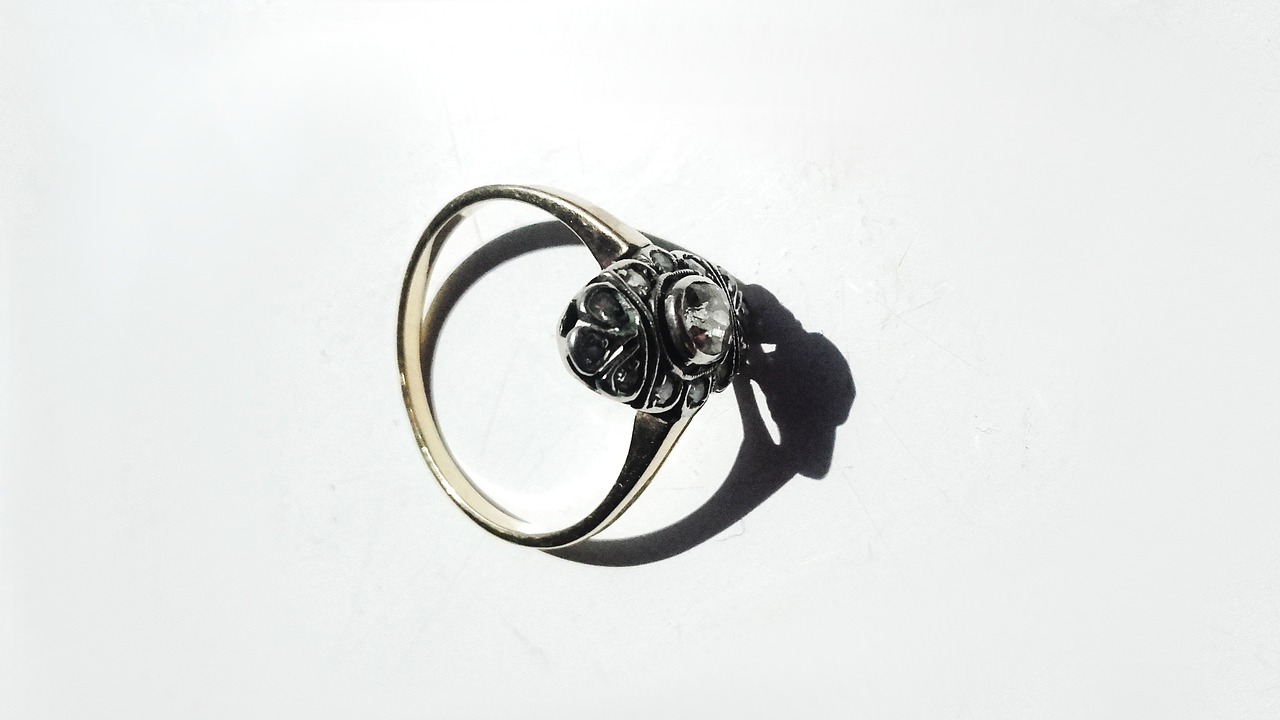
Sapphires: Wisdom and Nobility
Sapphires have long been revered for their stunning beauty and deep blue hue, but their significance extends far beyond aesthetics. Often linked with wisdom, nobility, and royalty, sapphires have played a pivotal role in various cultures throughout history.
Historically, sapphires were favored by royal families as symbols of power and protection. The stone was believed to bring divine favor and was often set in crowns and royal regalia. For instance, the British Crown Jewels include several notable sapphires, underscoring their importance as a representation of authority and prestige. In ancient times, it was thought that wearing sapphires could shield their wearers from envy and harm, further enhancing their desirability among the elite.
In addition to their royal connections, sapphires are also associated with spiritual insight and mental clarity. Many cultures believe that sapphires can enhance one’s intuition and help in making wise decisions. This belief has made sapphires a popular choice for those seeking guidance and enlightenment in their lives.
Moreover, sapphires are not limited to their traditional blue color. They come in a variety of hues, including pink, yellow, and green, each carrying its own unique significance. For example, pink sapphires are often associated with love and compassion, while yellow sapphires are linked to prosperity and success.
Today, sapphires are increasingly chosen for engagement rings and other significant jewelry pieces. Their rich history and the meanings attributed to them make them a thoughtful choice for marking important life events. As a symbol of fidelity and sincerity, sapphires resonate deeply with many couples, offering a timeless alternative to traditional diamond engagement rings.
In conclusion, sapphires embody a rich tapestry of meanings that span across cultures and centuries. Whether worn for their beauty, their historical significance, or their spiritual properties, sapphires continue to be a cherished gemstone, symbolizing wisdom and nobility in a modern context.
The Role of Sapphires in History
Sapphires have long been regarded as a symbol of royalty and power, with their rich blue hue evoking a sense of nobility and wisdom. Throughout history, these precious gemstones have adorned the crowns, robes, and jewelry of kings, queens, and influential leaders, signifying their status and authority.
Historically, sapphires were not only valued for their stunning appearance but also for their spiritual significance. Many cultures believed that sapphires could protect their wearers from harm and envy, making them a popular choice among the elite. In ancient Persia, it was believed that the sky was painted blue by the reflection of sapphires, further enhancing their revered status.
In medieval Europe, sapphires became a favorite among clergy and royalty alike. They were often embedded in ceremonial regalia, symbolizing divine favor and moral integrity. The use of sapphires in religious artifacts highlighted their connection to the heavens and their perceived ability to bring about spiritual enlightenment.
One of the most famous sapphires in history is the Star of India, a massive blue star sapphire weighing 563 carats. This gemstone, which is now housed in the American Museum of Natural History, has a storied past, having been owned by several notable figures and stolen in a high-profile heist.
In modern times, sapphires continue to be associated with wealth and prestige. They are frequently chosen for engagement rings and other fine jewelry, representing fidelity and sincerity. The enduring allure of sapphires ensures their place in both historical and contemporary contexts, making them a timeless symbol of power and elegance.
In conclusion, sapphires have played a significant role in history, not only as exquisite gemstones but also as powerful symbols of authority and virtue. Their legacy continues to thrive, captivating new generations with their beauty and meaning.
Modern Uses of Sapphires in Engagement Rings
Sapphires have emerged as a stunning alternative to traditional diamonds in engagement rings, captivating couples with their rich colors and deep meanings. In recent years, the popularity of sapphires has soared, making them a favored choice for those seeking something unique and personal in their ring selection.
One of the main reasons for the rise in sapphire engagement rings is their symbolic representation. Sapphires are often associated with wisdom, loyalty, and nobility, which resonate deeply in modern relationships. Couples today are looking for stones that not only reflect their personal style but also carry significant emotional weight.
In addition to their symbolism, sapphires are available in a variety of colors, with blue being the most recognized. However, they can also be found in pink, yellow, and even green hues. This color diversity allows couples to choose a sapphire that aligns with their personality and preferences. For instance, pink sapphires symbolize love and compassion, making them a beautiful choice for romantic engagements.
Moreover, sapphires are known for their durability, ranking just below diamonds on the Mohs scale of hardness. This makes them an excellent choice for an engagement ring that can withstand daily wear while maintaining its beauty over time.
Current trends also highlight the customization of sapphire engagement rings. Many couples are opting for unique settings that enhance the sapphire’s beauty, such as vintage-inspired designs or modern, minimalist styles. This trend not only showcases the gemstone but also reflects the couple’s individual story and style.
In conclusion, sapphires are more than just beautiful stones; they embody the essence of modern love and commitment. Their rich history, coupled with contemporary design choices, makes them a perfect symbol for couples embarking on their journey together. As more people discover the allure of sapphires, they continue to redefine what it means to choose a meaningful engagement ring.

Choosing the Right Gemstone for Your Ring
is a decision that goes beyond mere aesthetics; it intertwines personal significance, emotional resonance, and cultural meanings. When selecting a gemstone, it is essential to consider not only the visual appeal but also the profound messages that different stones convey. Here are some practical tips to guide you in making the perfect choice for your ring.
- Identify Your Personal Style: Begin by reflecting on your personal style and preferences. Do you prefer classic, modern, or vintage designs? Understanding your aesthetic will help narrow down your gemstone options.
- Consider the Meaning: Each gemstone carries its own unique symbolism. For instance, diamonds represent eternal love, while emeralds symbolize renewal and growth. Research the meanings behind different stones to find one that resonates with you.
- Think About Color and Durability: The color of the gemstone should complement your skin tone and personal style. Additionally, consider the stone’s durability, especially for everyday wear. For example, sapphires and rubies are known for their hardness and can withstand daily activities.
- Emotional Connection: Choose a gemstone that evokes a strong emotional response. Whether it reminds you of a cherished memory or represents a significant life event, the emotional connection can enhance the significance of your ring.
- Consult with Experts: Don’t hesitate to seek advice from jewelers or gemstone experts. They can provide valuable insights into the properties of various stones and help you make an informed decision.
In conclusion, selecting the right gemstone for your ring is a deeply personal journey. By considering your style, the meanings of different stones, their durability, and your emotional connections, you can choose a gemstone that not only looks beautiful but also holds significant value in your life. Remember, the perfect gemstone is one that resonates with you, making your ring a true reflection of your personality and sentiments.
Considering Personal Style and Preferences
When it comes to selecting the perfect gemstone for your ring, personal style is a key factor that should not be overlooked. Your choice of gemstone should resonate with your aesthetic preferences and reflect your individuality. This section explores how to align your gemstone selection with your unique style.
Firstly, it is essential to understand that gemstones come in a variety of colors, shapes, and sizes, each offering a different vibe and emotional resonance. For instance, if you lean towards a more classic and elegant style, you might gravitate towards traditional gemstones like diamonds or sapphires. These stones exude sophistication and timeless beauty, making them perfect for formal occasions.
On the other hand, if your style is more bohemian or artistic, you may prefer gemstones like emeralds or rubies, which can add a pop of color and personality to your jewelry. These vibrant stones not only attract attention but also convey a sense of passion and creativity.
Another crucial aspect to consider is the cut and setting of the gemstone. A modern, geometric cut can complement a contemporary style, while a vintage cut can enhance a more romantic or nostalgic aesthetic. The setting of the gemstone also plays a significant role; for example, a halo setting can add extra sparkle and elegance, while a simple solitaire can highlight the beauty of the stone itself.
Ultimately, the gemstone you choose should not only reflect your style but also evoke emotional significance. Whether it represents a special memory or a personal mantra, aligning your gemstone choice with your personal narrative can create a meaningful connection.
In conclusion, taking the time to consider your personal style and preferences when selecting a gemstone will ensure that your choice is not only visually appealing but also deeply personal. By understanding how different gemstones resonate with your aesthetic, you can find the perfect piece that truly represents you.
Understanding the Emotional Impact of Gemstones
When it comes to selecting a gemstone for your ring, it is crucial to recognize the emotional resonance that different stones can evoke. Each gemstone carries its own unique set of meanings and associations, which can significantly influence the feelings they inspire in the wearer and those around them.
For instance, diamonds are often viewed as symbols of love and commitment. Their clarity and brilliance can evoke feelings of passion and devotion, making them a popular choice for engagement rings. On the other hand, emeralds, with their vibrant green hue, are associated with renewal and growth. They can evoke a sense of tranquility and hope, symbolizing fresh starts and new beginnings.
Rubies, known for their deep red color, symbolize passion and energy. They are often chosen to represent intense emotions and can serve as a reminder of the fiery love shared between partners. In contrast, sapphires are linked to wisdom and nobility. Their rich blue tones can inspire feelings of calmness and stability, making them an excellent choice for those seeking a sense of peace and assurance.
When choosing a gemstone, it is essential to reflect on the emotions you wish to evoke. Consider the significance of the occasion and the message you want to convey. A thoughtful selection can create a lasting bond between the wearer and the gemstone, enhancing the overall meaning of the piece.
In conclusion, the emotional impact of gemstones is profound and varied. By understanding the unique attributes of each stone, you can make an informed decision that not only complements your style but also resonates with your personal feelings and experiences.
Frequently Asked Questions
- What does a diamond symbolize?
Diamonds are often seen as symbols of love and commitment, making them a popular choice for engagement rings. Their brilliance and rarity evoke strong emotions, representing the eternal bond between partners.
- What are the meanings associated with emeralds?
Emeralds are known as the stone of renewal and growth. They are believed to bring healing properties, promoting emotional balance and harmony, making them a wonderful choice for those seeking personal transformation.
- Why are rubies considered the gemstone of passion?
Rubies symbolize passion and energy, often associated with romantic love. Their vibrant red color ignites feelings of desire and intensity, making them a meaningful gift for special occasions.
- What is the significance of sapphires?
Sapphires are linked to wisdom and nobility. Historically worn by royalty, they symbolize power and protection. Today, sapphires are increasingly popular in engagement rings, representing loyalty and trust.
- How do I choose the right gemstone for my ring?
Choosing the perfect gemstone involves understanding your personal style and the emotional significance of the stone. Consider what resonates with you and what emotions you want the gemstone to evoke.

